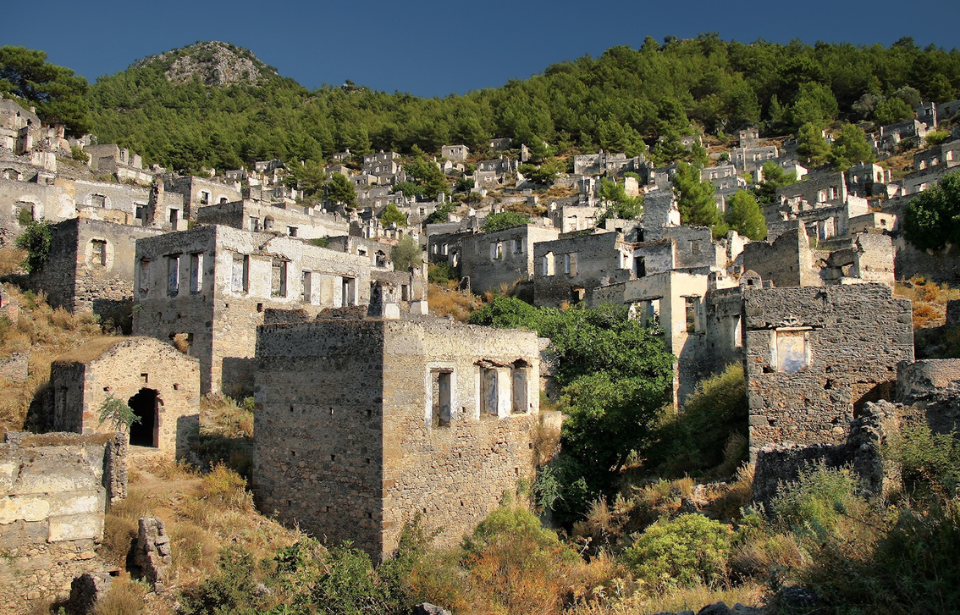Kayaköy (or “Rock Village”) is a ghost town located near the popular resorts of Fethiye and Olu Deniz in Lycia province in the western part of Mediterranean Turkey. This area is also known as the Turquoise Coast and is a major part of the Turkish Riviera in southwestern Turkey. Once a city built on the integration of multiple cultures, a political shift caused the population to split, and a major environmental disaster saw the city evacuated and abandoned.
The town was bustling with life
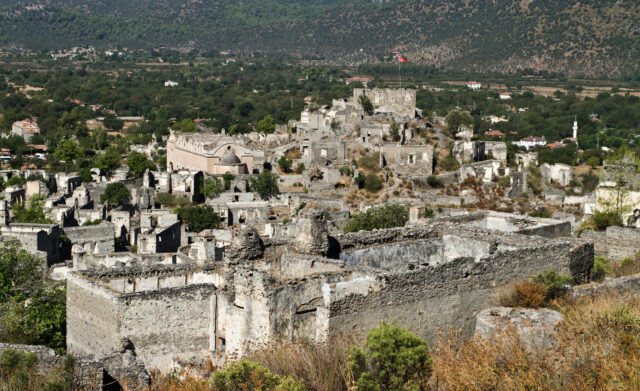
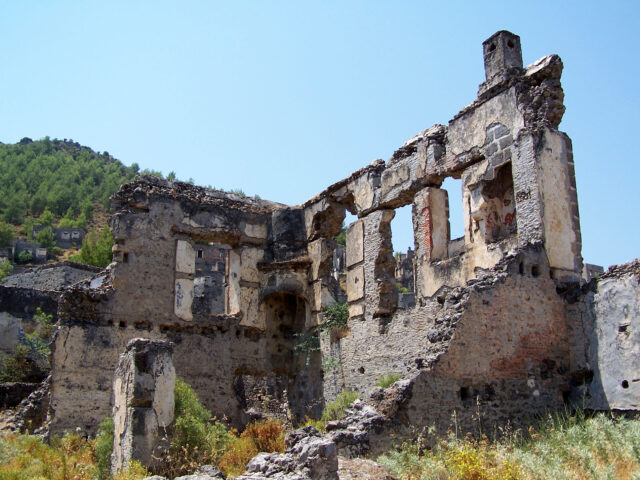
Kayaköy was a thriving community until the early 1920s. In ancient times, the settlement was known as Lebessos but was later referred to as Livissi. For a long time, the inhabitants of the town consisted of Anatolian Greek and Turkish Muslims, the former living on the hillside and working as artisans, and the latter populating the valley floor of the Kaya valley and working as farmers.
These neighbors were deeply connected and lived together in harmony despite their religious and cultural differences. However, changing geopolitics swiftly altered the peace in the town and the population’s living situations.
Turmoil in Kayaköy
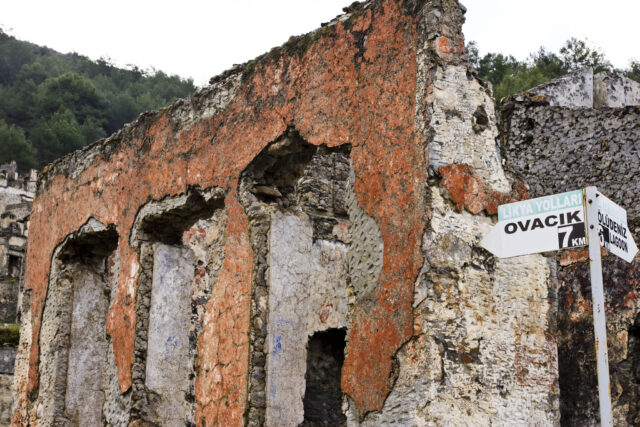
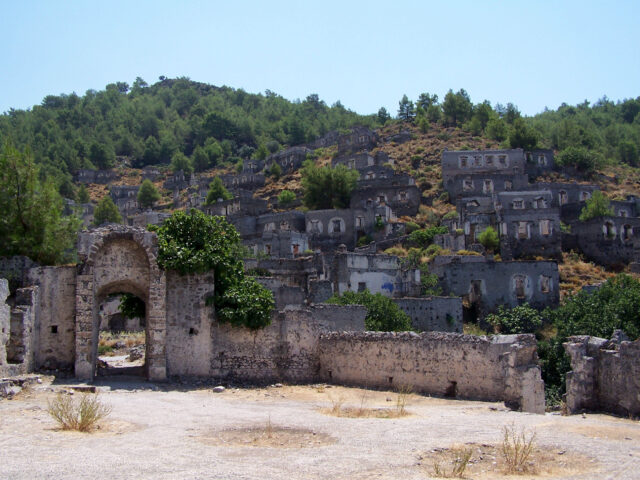
After the collapse of the Ottoman Empire, the multicultural, multinational, and multi-religious character of the region was lost. The governments of Greece and Turkey in 1923, after the Greco-Turkish War of 1919-1923 and because of the decisions of the Treaty of Lausanne, decided to make a population exchange and to become ethnically “pure” nation states.
As such, all Greek Orthodox residents of Turkey were deported to Greece and all Muslim residents from Greece were deported to Turkey. When the Greek people abandoned their homes in Kayaköy and left for Greece, Muslims from Greece moved in to fill their place. However, the new inhabitants that came from Greece were farmers accustomed to more fertile lands. They didn’t like the rocky land of their new settlement and quickly abandoned the town. Since then, the town of Kayaköy was left completely deserted.
The history of Kayaköy
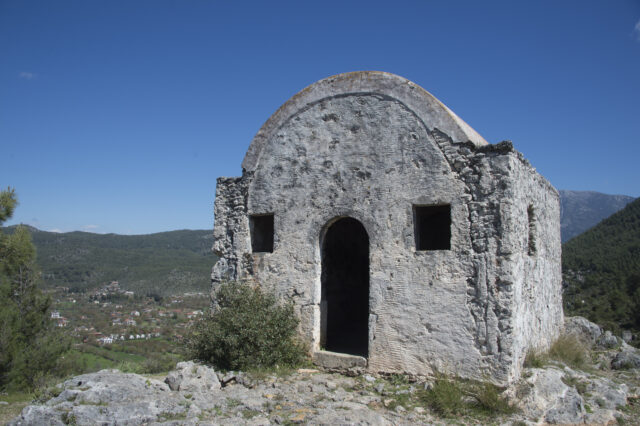
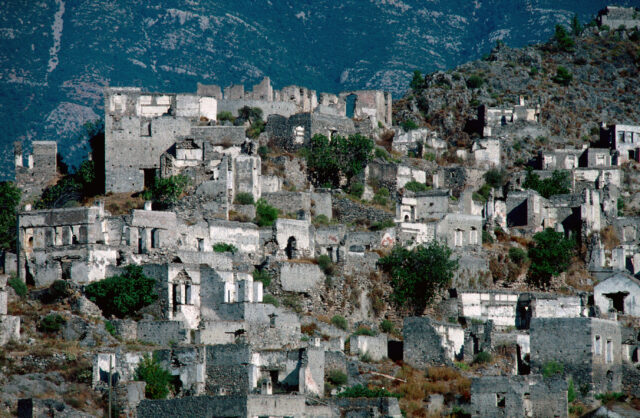
Greeks had been inhabiting the area since the ancient times. While the town of Livissi was built in the 18th century, it was constructed upon the ruins of the ancient city of Lebessus, which was a vital part of the ancient province Lycia. Tombs from the Lycian civilization can be found north of the today’s ruined town, in the village of Gokceburun, which had been an important Christian center from the beginning of the 7th century.
The site is mentioned in the Notitia Episcopatuum of Pseudo-Epiphanius written under the Byzantine Emperor in 640 and also in a 10th-century document attributed to Emperor Leo VI the Wise, proving its importance at throughout history. More than 20 churches, chapels, and monasteries were constructed in the village and nearby area, some of which are still standing today.
Livissi was also an important location as it was where the residents of Byzantine Gemiler Island would escape to in order to protect themselves from pirates.
Kayaköy served as refuge from disaster
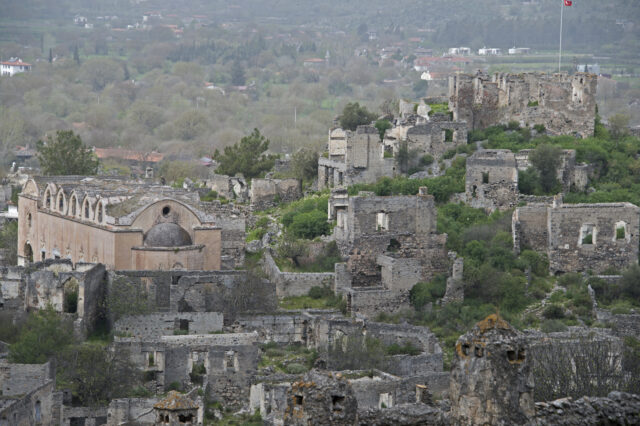
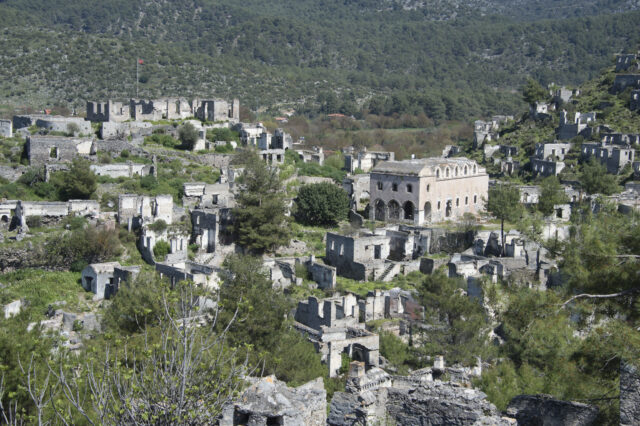
In the 19th century, Livissi had undergone significant reconstruction. The close town of Fethiye (known by the Greeks as Makri) was seriously destroyed by an earthquake in 1856 and a fire in 1885. With nowhere to go, many people from the neighboring town came to live in Livissi. According to Greek and Ottoman documents, at the end of 19th century, it had over 6000 inhabitants.
However, when the mass exodus and population exchange between Greece and Turkey began, the population of the town began to dwindle. For political reasons, inhabitants had to leave their homes and livelihoods. Eventually, the village had emptied, and in 1957, became severely damaged following the Fethiye earthquake.
Kayaköy now
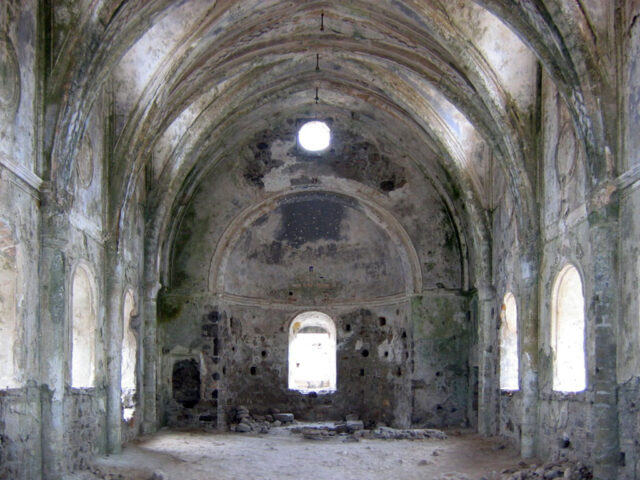
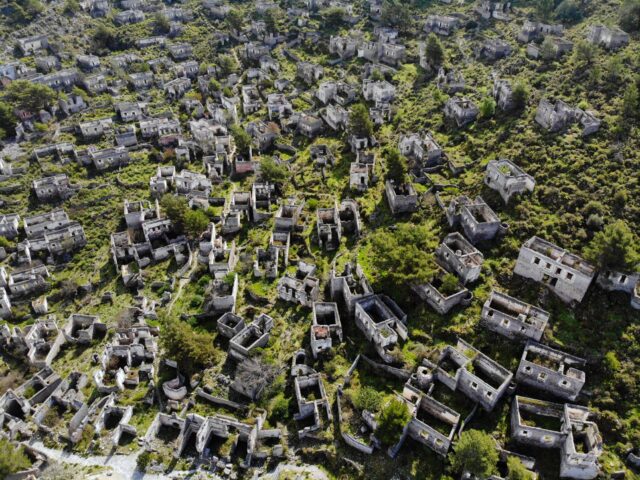
Today, the abandoned village of Kayaköy is a picturesque place to visit. The village is an open-air museum and sits as a monument of the past. The narrow streets are overgrown with vegetation, the stone buildings are roofless and slowly crumbling, and in the middle of the ghost town, there is a fountain from the 17th century. The site consists of 500 houses in ruins and two Greek Orthodox churches, the latter serving as the most remarkable sites in the ghost town. With faded frescoes and vaulted ceilings and arches, the surviving parts of the churches still show the former glory of the village.
Read more: Chorazin: Jesus Christ Reportedly Put A Curse On This Ancient Village
As of now, Kayaköy is under the protection of the Turkish government, and there are projects in the pipeline for the future development of the village.
